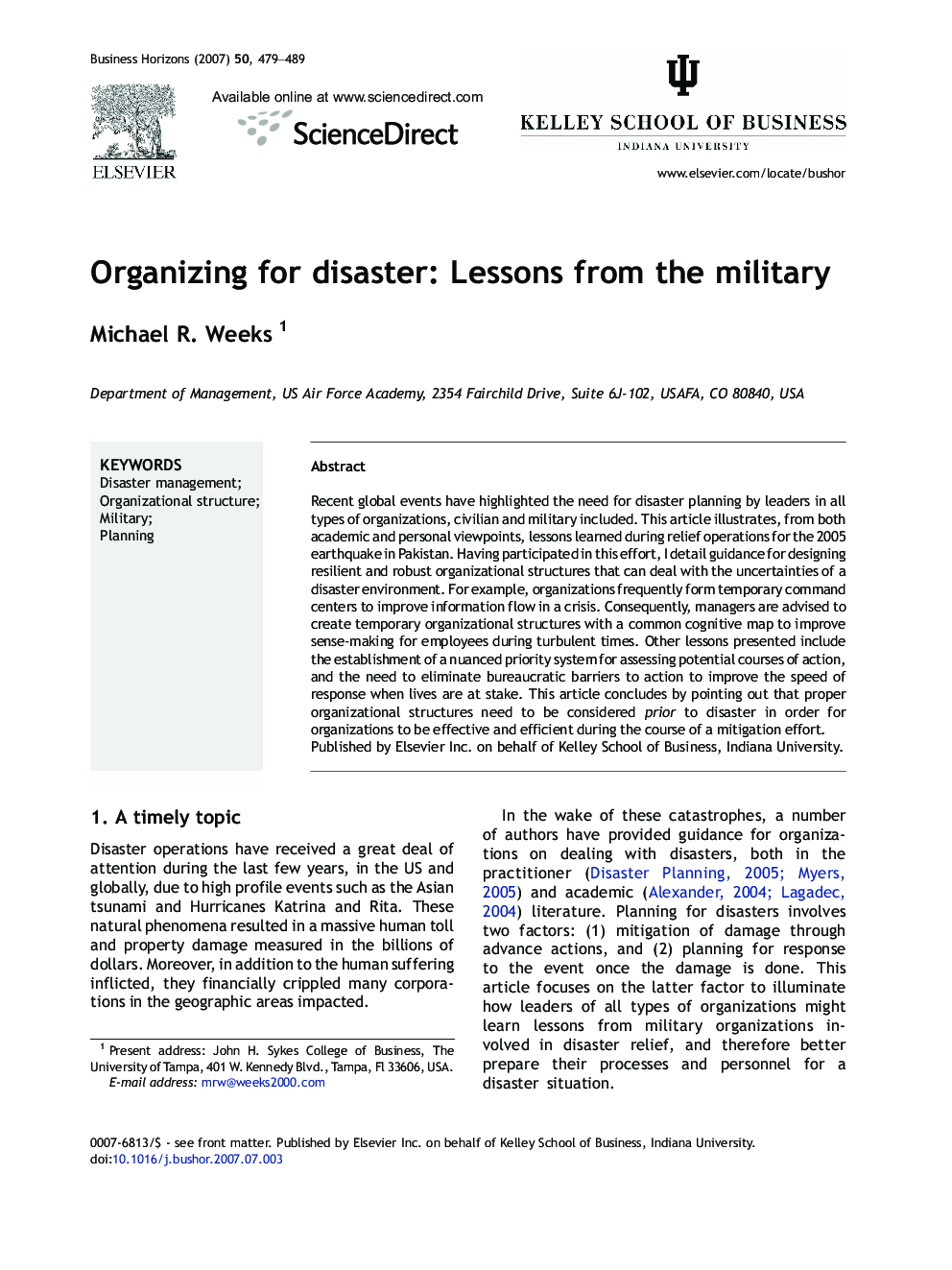| Article ID | Journal | Published Year | Pages | File Type |
|---|---|---|---|---|
| 1014399 | Business Horizons | 2007 | 11 Pages |
Recent global events have highlighted the need for disaster planning by leaders in all types of organizations, civilian and military included. This article illustrates, from both academic and personal viewpoints, lessons learned during relief operations for the 2005 earthquake in Pakistan. Having participated in this effort, I detail guidance for designing resilient and robust organizational structures that can deal with the uncertainties of a disaster environment. For example, organizations frequently form temporary command centers to improve information flow in a crisis. Consequently, managers are advised to create temporary organizational structures with a common cognitive map to improve sense-making for employees during turbulent times. Other lessons presented include the establishment of a nuanced priority system for assessing potential courses of action, and the need to eliminate bureaucratic barriers to action to improve the speed of response when lives are at stake. This article concludes by pointing out that proper organizational structures need to be considered prior to disaster in order for organizations to be effective and efficient during the course of a mitigation effort.
